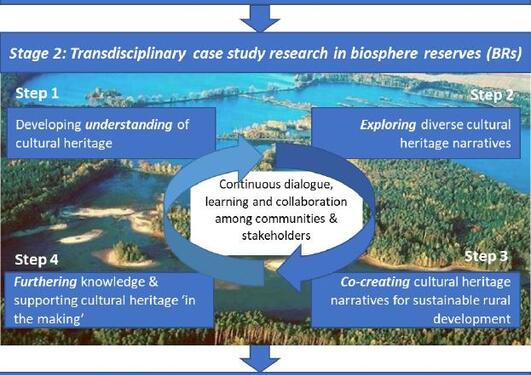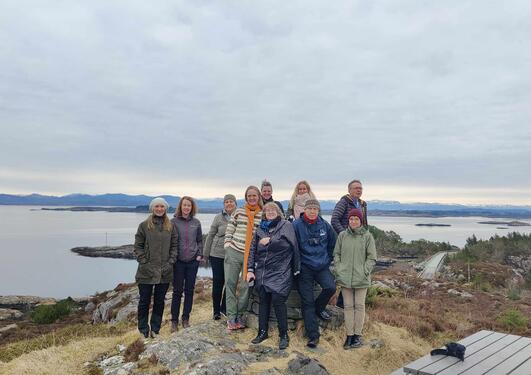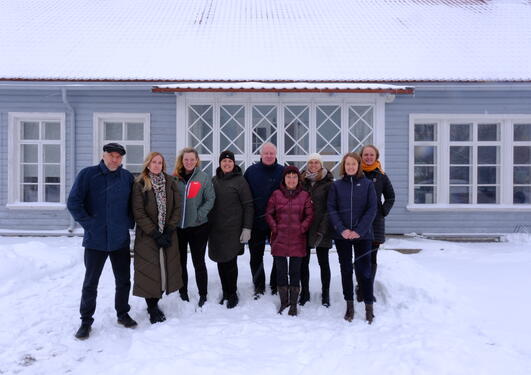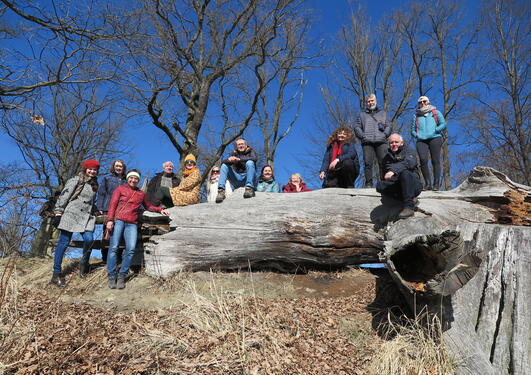Wrapping Up the CULTIVATE Project
After 3,5 years, the CULTIVATE project is coming to an end. During the first week of November, members of the UNESCO Chair Group met the other project partners for a final event in Edinburgh hosted by the Centre for Mountain Studies at the University of Highlands and Islands, followed by a last project meeting, and a tour of Wester Ross Biosphere Reserve.

Main content
Cultivating Relationships Between Cultural Heritage & Sustainable Development
Tuesday November 5, the Centre for Mountain studies at the University of Highlands and Islands hosted a one-day conference, Heritage and Horizon: Cultivating relationships between cultural heritage & sustainable development, as a way of wrapping up the CULTIVATE project. The event aimed to give researchers, representatives of UNESCO UK, representatives from biosphere reserves, and others, a chance to discuss the role of cultural landscapes and cultural heritage in approaches for more sustainable land use and communities, identify new research trajectories, and promote collaboration between researchers, practitioners, and policy makers.
The day was started by a welcome from UK’s Ambassador to UNESCO, Anna Nsubuga, who emphasised the biosphere reserves have the qualities to build, learn and share. She reminded the audience that many BRs face similar challenges – which has also been noticed throughout the CULTIVATE project – which makes collaborations so important: By working together, and sharing the knowledge, we can avoid repeating mistakes.
The event was also an opportunity for the CULTIVATE project partners to present the project, and share their findings from Czechia, Estonia, Norway and Scotland, as well as participating in a panel discussion on research, policy and practice within cultural heritage. A diverse series of workshops was also included in the conference, before ending the day with a very appropriate cultural heritage walking tour through the Old Town of Edinburgh, led by Jane Robertson, Head of Engagement & Operations at Edinburgh World Heritage.
A Tour of Wester Ross Biosphere Reserve
During the following two days, Wester Ross Biosphere Reserve (WRBR) manager Natasha Hutchison and WRBR Chairperson Iain Turnbull gave the CULTIVATE partners a tour of (a fraction) of the biosphere reserve. First stop on the trip was the Corrieshalloch Gorge, where we could see the stunning, 46-meter-high Falls of Measach. The gorge also has a rich flora of ferns and mosses, and generally provides a habitat for plants that are less common in the surrounding area because of the high grazing pressures from red deer.
The group landed in Ullapool for the night – a small village in the middle of the Westcoast of the Scottish Highlands with only around 1500 inhabitants. After dinner at one of the local pubs, the group was treated to some wonderful stories and Gaelic songs by Donald MacIver, who is also a board member at WRBR.
The next day, the Iain drove the group into the north-west highlands, stopping for a view of the mountain Stac Pollaidh. This is a rocky peak made up of many pinnacles, resting 612 MASL. Here, everyone took in the beautiful scenery as Catriona Mallows, research associate at UHI, read the poem A Man in Assynt by Norman MacCaig, posing the question: Who owns this landscape.
This visit was followed by a trip to the Coigach peninsula north of Ullapool. Here, the group was met by Steve Husband, a member of the Coigach Community Development Company, who despite being English has lived in Scottland for most of his life. Steve told us about how the small communities of Coigach take different measures to live sustainably, and how the work to keep the inhabitant numbers of the area. Steve also took the group for a beautiful walk in the coastal heathlands around Achduart, before the group continued on to Inverness and returned to their respective home countries.
Next Steps
Although the project is ending, there are still lose ends to tie up, and papers to finish. The official CUTLIVATE website will be kept active for the time being, and will be updated with news of new outputs.
The conference in Edinburgh was fruitful in terms of making connections and cultivating new research ideas - maybe new collaborations will follow in the future!







